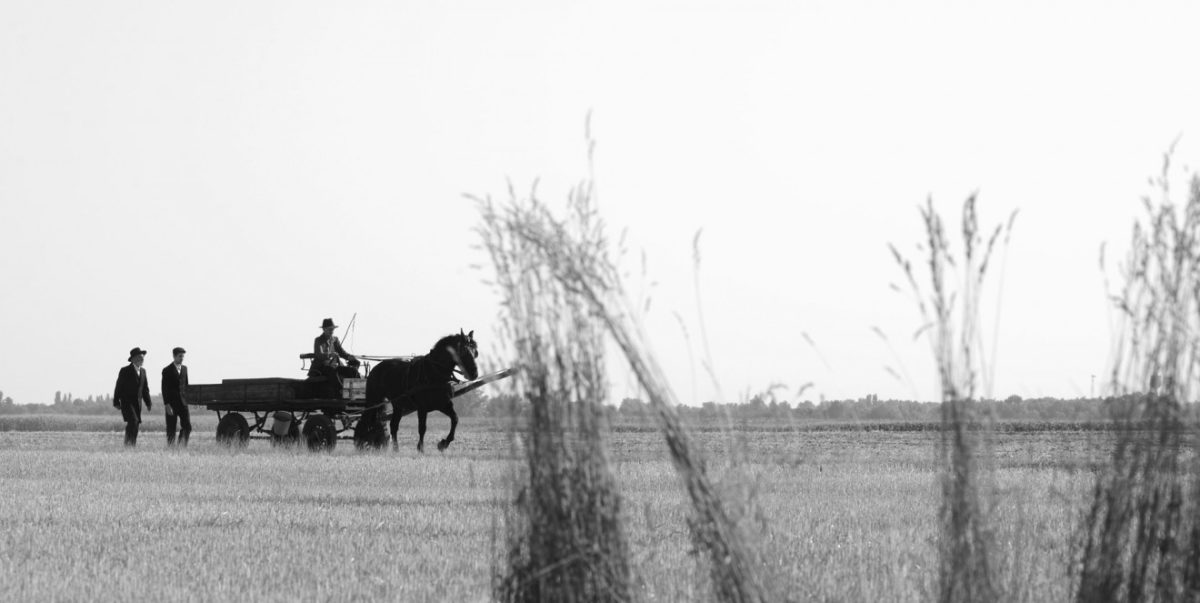In the aftermath of World War II, a small town in Hungary has banished from sight and mind any indication of the void left by its now nonexistent Jewish population. Houses have been appropriated, goods redistributed and jobs filled. The cracks of injustice marring this community’s façade are now carefully covered in searing white. It’s a mockery of moral immaculateness bound to be tarnished in 1945 (Ferenc Törok, 2017), a reimagining of the western’s conventions as a conduit for exploring post-Holocaust guilt.
Evoking High Noon (Fred Zinnemann, 1952), both in structure and form, this story of communal moral hypocrisy is triggered by the arrival of two Hassidic Jewish men. Regarding the film’s grayscale cinematography, they are two brushstrokes of inky black slashing through the polished monochrome. In matters of narrative, the men are personifications of the town’s collective guilt for their own silent opportunism and complicity with the invaders’ genocidal practices.
No matter how many shots of ominous clocks, slowly boiling water and burning documents Török weaves throughout the film, 1945 is a victim of its own brevity. With no breathing space or contemplative possibility given to scenes or shots, the director has deprived his post-war Hungarian High Noon of that classic’s most galvanizing element – tension. This tonal and rhythmic monotony creates a disconnect between the text’s suggestion of conflict and the failed formal translation of that same dynamic.
From its chimeric premise, 1945 develops an easily digestible, but ultimately shallow inclusion in the ever-growing annals of World War II fiction cinema. Such themes ask for a considerable intellectual weight or staying power, but this project is as slight and featherweight as the film’s often-repeated image of ephemeral plumes of smoke.
